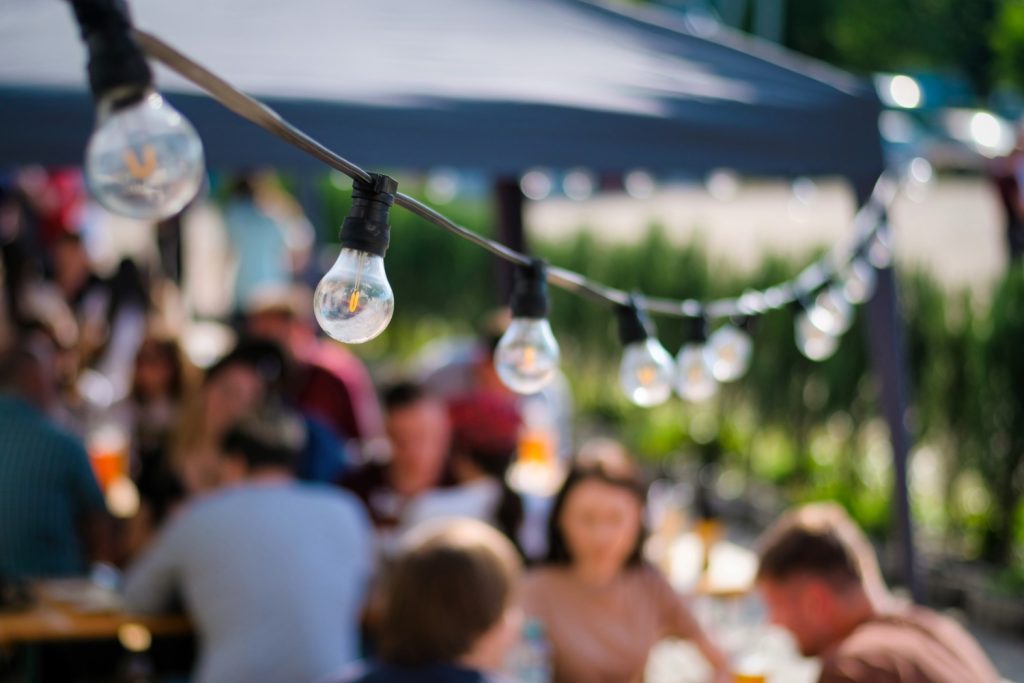
Outdoor marketing often comes down to creating spaces that attract and sustain attention. A canopy does this in a direct, practical way. It marks a territory, provides comfort, and gives a business the kind of visibility that simple signage can’t achieve. Many companies now rely on promotional canopies to give shape and structure to their presence at public gatherings. They serve as extensions of brand identity while keeping both staff and visitors sheltered from the elements.
Canopies have quietly evolved from basic tents into strategic tools for engagement. They can transform an empty patch of asphalt or grass into a functioning display area that feels organized and intentional. For businesses that operate in fast-paced or open-air environments, that structure can make a lasting impression.
The Role of Canopies in Business Events
Trade shows, product launches, and corporate events all rely on presentation. It draws a subtle boundary that signals professionalism and preparedness. People tend to gravitate toward shaded or structured areas, and that natural pull helps businesses create consistent interaction throughout the day.
Pop-up tents and event tents have become popular for their simplicity. They can be transported in compact form, assembled quickly, and packed down without special equipment. Inflatable tents, on the other hand, cater to companies that need something more visually distinct or quicker to deploy. The decision often comes down to logistics, travel frequency, and how the canopy complements other materials, such as tables, displays, or banners.
At a trade show, for instance, attendees move fast. A visible and comfortable booth can make the difference between a quick glance and a conversation that leads to an actual sale. A canopy provides a physical cue that a business is prepared and open for engagement, even in unpredictable environments.
Durability and Materials
Anyone planning to buy a heavy duty canopy should first think about endurance. Outdoor conditions change quickly, and a canopy built for longevity saves time and money in the long run. The strength of the frame material plays a central role in this. Steel and aluminum are common because they resist deformation and carry fabric tension evenly.
A sturdy frame gives structure, while reinforced corners reduce wear from frequent assembly. Weighted feet keep the base stable on pavement, and ground stakes secure it on grass or soil. The fabric used for the roof and sides also matters. A polyester tent balances strength and portability, making it a dependable choice for recurring use. Businesses that attend multiple events in a year often value this combination because it minimizes replacements.
A good canopy also retains color and tension over time, maintaining a consistent look. It’s part of what makes a promotional canopy practical. It stays functional and presentable without constant repair.
Branding Through Design
Once the physical structure is decided, attention shifts to how a canopy looks. The surface area of a canopy can act as a blank canvas for identity. A custom design allows logos, clear slogans, and taglines to be applied in visible, proportionate ways. A custom printed canopy helps unify a company’s visuals across different events, reinforcing recognition even among casual passersby.
Custom tents can also be shaped around a purpose. Some designs focus on open sides to allow free movement, while others prioritize enclosure for product storage or demonstrations. Event organizers sometimes match canopy colors to other display elements so that the entire space feels cohesive without being showy.
Practical Considerations
A promotional canopy may look simple, but several technical details affect its performance. The first is portability. How easily it can be packed, moved, and set up by a small team. A compact design saves transport costs and makes event participation more flexible.
Next comes structure. A sturdy frame with quality connectors and locking joints improves stability, especially when paired with reinforced corners. Weighted feet prevent lifting during strong gusts, while ground stakes provide extra grip on uneven terrain. Even the choice of tensioning hardware can affect how securely the fabric holds during extended use.
Frame material selection depends on the frequency of deployment. Lighter frames may suit occasional community events, while thicker metal frames work better for heavy rotation schedules. Businesses using canopies as medical shelter units or for outdoor registration setups usually lean toward durable builds that can stay up for longer periods.
Maintenance extends the life of the canopy. Cleaning fabric panels, checking hardware, and storing components in dry conditions prevent corrosion and mildew. These small habits protect the investment and keep the canopy ready for use at short notice.
Practical Marketing Value
A canopy’s purpose may start with function, yet its influence on marketing goes beyond that. Once deployed, it becomes a recognizable marker of presence. Visitors remember a business partly through its physical space: the color, layout, or how easy it was to approach the booth. Over time, repetition builds familiarity.
At community fairs or recurring corporate events, this familiarity matters. People might not remember every product pitch, but they remember seeing the same clean, organized setup that reflects reliability. Custom tents offer flexibility in size and presentation, making it easier to adapt for different audiences.
Event planners often look for modular canopies that can link together or expand. This helps scale setups for busier events without replacing the entire structure. The combination of a sturdy frame and adaptable design keeps the canopy useful for years, even as marketing strategies change.
Conclusion
Promotional canopies connect practicality and presence. They protect from the sun and rain while doubling as visual identifiers for businesses in open spaces. Through smart use of materials, custom design, and consistent maintenance, a canopy becomes a tool that supports both function and communication.
They don’t need to rely on flash or gimmicks to work. A solid frame, good anchoring, and clear visuals are enough to turn a temporary structure into something that supports lasting recognition. For many businesses, that blend of reliability and exposure turns a simple piece of fabric and metal into a consistent part of their sales environment.